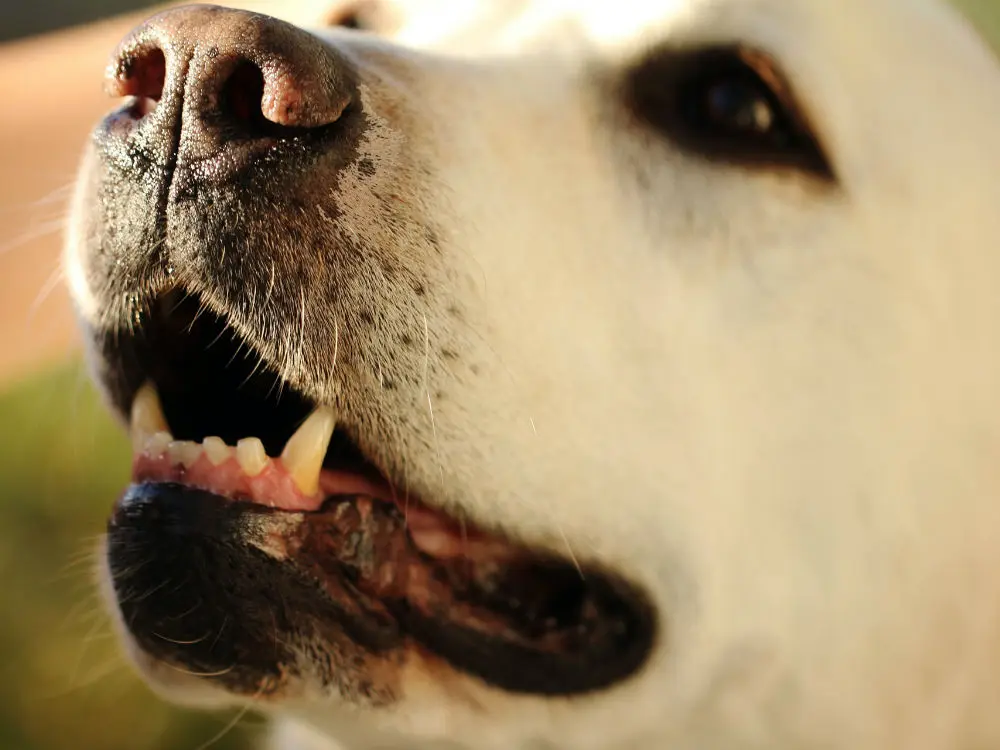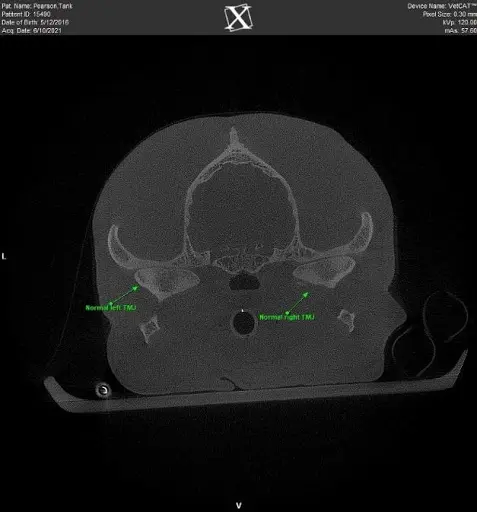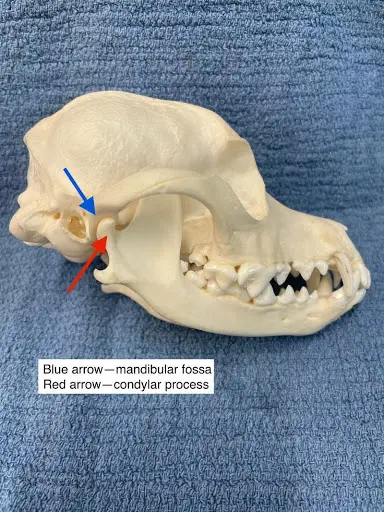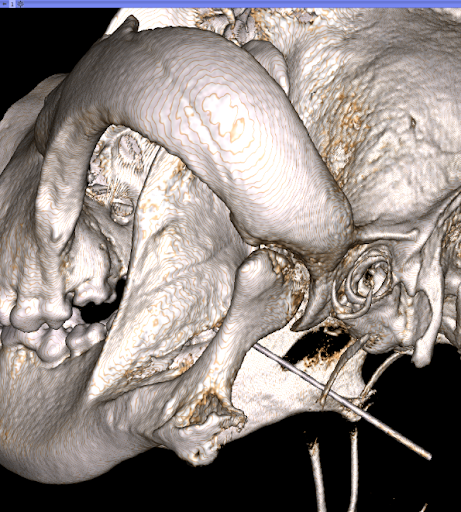
08 Jul Causes and Symptoms of TMJ Disease in Dogs
The temporomandibular joint is a “hinge” joint responsible for opening and closing the oral cavity. The TMJ movement differs across species due to each species’ dietary requirements. In dogs, TMJ movement involves flexion and extension with minor translational movement.
Anatomically, the condylar process of each mandible articulates with the mandibular fossa of the temporal bone. A fibrocartilaginous disc provides a cushion at the joint surfaces. The TMJ in dogs plays a role in occlusion (or the way teeth meet) and is prone to developmental, traumatic, and age-related diseases.
What Causes TMJ Disorders in Dogs?
TMJ Dysplasia
TMJ dysplasia is a rare developmental disease reported in Basset Hounds, Cavalier King Charles Spaniels, Dachshunds, and certain feline breeds (i.e., Persians). This condition is a malformation of the mandibular condyles and fossa. Due to the abnormal formation, TMJ luxation can occur with intermittent jaw-locking. Yawning may precipitate an event.
Coronoid impingement, also known as “open mouth jaw locking,” may occur in which the coronoid process of the mandible is displaced outside of the zygomatic arch. When this happens, the pet is often quite anxious due to an inability to close its mouth. Drooling is commonly seen.
Over time, TMJ dysplasia will progress to osteoarthritis. Clinical signs of osteoarthritis include oral discomfort and difficulty during yawning, grooming, and eating.

Figure 1 Cone Beam Computed Tomography image of normal TMJs in an adult dog
Oral Trauma
Trauma is a common cause of TMJ disease in dogs. Dogs who suffer maxillofacial trauma may have fractures of their TMJ. As the fracture site heals, ankylosis or pseudoankylosis may occur, forming tissue within or outside the joint, creating an inability to fully open the mouth.
A surgery called ‘gap arthroplasty’ is then needed to remove the abnormal tissue to improve TMJ range of motion. TMJ luxation is another common manifestation of trauma and is seen more commonly in cats than dogs. TMJ luxation is most common in a rostrodorsal location with a shift in the mandibles to the opposite side of the luxation. This is uncomfortable and can be painful to the pet. Anxious behavior, pawing at the face, along with drooling is usually present.

Osteoarthritis
Osteoarthritis may occur secondary to TMJ dysplasia or as a primary cause. Osteoarthritis is the most common TMJ disorder seen in dogs. It may manifest due to age or have an underlying congenital cause. Avoiding hard chewing objects such as bones, large rawhides, antlers, and cow hooves will decrease the force on the TMJ joint. Thus, it may minimize the incidence of TMJ arthritis (as well as the incidence of fractured teeth!).

Figure 2 A TMJ in an adult dog with signs of osteoarthritis
How Are TMJ Disorders Diagnosed?
TMJ disease is diagnosed most accurately through imaging. Skull radiographs are beneficial but often are challenging to interpret as they are two-dimensional images. Cone-beam CT imaging provides 3-D evaluation and is invaluable for diagnosing TMJ disorders. This imaging modality is completed under general anesthesia, with imaging results in less than 4 minutes in most patients.
Board-Certified Vet Dentists in Colorado Springs
TMJ disorders significantly affect the quality of life of pets. Dogs use their oral cavity not only for eating but also for play, grooming, and defense. If you suspect your dog has a TMJ disorder, reach out to our Board-Certified Veterinary Dentists at Animal Dental Care. We would love to discuss your concerns during a scheduled consult or on an emergency basis.
Photo by Sandy Millar on Unsplash (7/3/2021)


